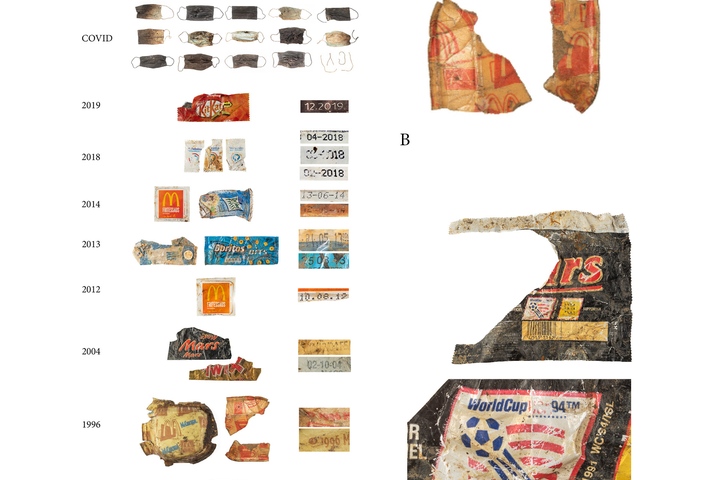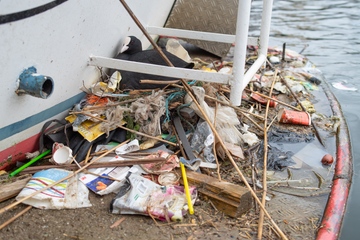PLASTIC FANTASTIC
Dissecting the man-made fossil record of the Plastic Age
— By Andru Shively —
We know already how adaptable waterbirds are, taking easily to plastics and other rubbish as nest-building materials, a behaviour spotted even on remote rocks of the northern Atlantic. Back on the continent, in the urban waterways of Amsterdam, the omnipresent common coot has been engaged in the practice for decades, as a study analysing layers of plastic “fossils” preserved in their nests has shown.
We know already how adaptable waterbirds are, taking easily to plastics and other rubbish as nest-building materials, a behaviour spotted even on remote rocks of the northern Atlantic. Back on the continent, in the urban waterways of Amsterdam, the omnipresent common coot has been engaged in the practice for decades, as a study analysing layers of plastic “fossils” preserved in their nests has shown.
 A fossil record of the ‘Plastocene’: successive layers span periods from the 1994 World Cup to the Covid pandemic and beyond (Photo: Auke-Florian Hiemstra) |
Dutch biologist Auke-Florian Hiemstra of both the Naturalis Biodiversity Center and Leiden University has been collecting common coot nests from Amsterdam’s canals for years, taking them apart to piece together their history.
While all kinds of litter – including Covid facemasks, windscreen wipers, and even earphones – were found woven into the nests, particularly useful for the analysis were pieces of food packaging and plastic wrappers with printed expiration dates. With these, Hiemstra was able to sketch a timeline for each nest.
Astonishingly – or perhaps not – some of the deepest layers contained packaging from the 1990s, not only dating the nests more than 30 years back, but in doing so also demonstrating how the nests are reused and added to by successive generations adapting to human waste. The typical lifespan for the common coot is five years.
 According to Hiemstra, the common coot has only been breeding in Amsterdam since 1989, thus some nests document their entire history in the city (Photo: Auke-Florian Hiemstra) |
“You flip through these nests, like through pages of a history book, uncovering the past,” Hiemstra said. “History is not only written by humans; nature is keeping track as well.”
We humans ought to learn from these avian recyclers, who see our waste for what it is: something without an expiration date.
We humans ought to learn from these avian recyclers, who see our waste for what it is: something without an expiration date.
28.03.2025 Plasteurope.com [257665-0]
Published on 28.03.2025
